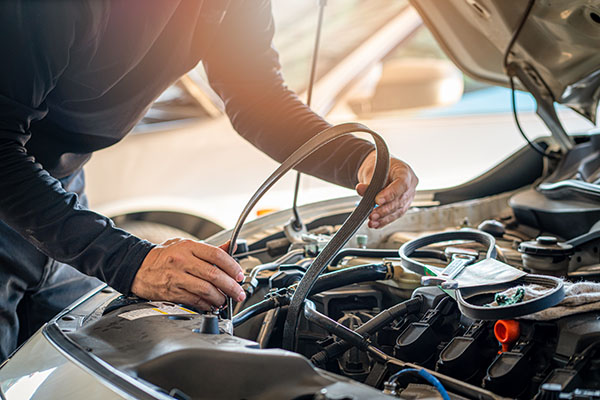
Timing and auxiliary belts play a crucial role in the proper functioning of your vehicle's engine. These belts are responsible for synchronizing the movement of various engine components and driving essential accessories. Over time, these belts can wear out, become damaged, or lose their tension, leading to potential issues and even engine damage. Before those aforementioned issues start, there are a few signs you should watch out for - surprisingly, they are listed down below so keep on reading if you want to find out more!
1. Squealing or Screeching Noises
A high-pitched squealing or screeching noise coming from the engine area is often a clear indication of a worn-out or loose belt. This noise occurs when the belt slips or fails to maintain proper tension. If you hear these sounds, it's crucial to have your belts inspected and replaced promptly to prevent further damage.
2. Visible Cracks or Damage
Regular visual inspection of your belts can reveal signs of wear and tear. Look for cracks, fraying, or any visible damage on the belt's surface. Noticing these issues is a dead giveaway, so consider consulting with your local mechanic.
3. Excessive Belt Wear
A properly functioning belt should have a consistent and even wear pattern. If you notice excessive wear on one side or the edges of the belt, it may indicate a misalignment or tensioning problem. Addressing this issue promptly is crucial to prevent belt slippage and potential damage to other engine components.
4. Engine Misfires or Rough Running
A failing timing belt can cause the engine to misfire or run rough. This is because the timing belt is responsible for ensuring that the engine's valves open and close at the precise moment. If the timing is off due to a worn-out or stretched timing belt, it can result in poor engine performance, misfires, or even engine stalling.
5. Engine Overheating
In some vehicles, the auxiliary belt drives the water pump, which helps circulate coolant through the engine to regulate its temperature. If the auxiliary belt fails, the water pump won't function correctly, leading to inadequate cooling and potential engine overheating. If you notice your engine temperature rising or frequent overheating issues, it's essential to check the condition of your belts.
6. Accessories Malfunctioning
The auxiliary belt drives various accessories, such as the alternator, power steering pump, and air conditioning compressor. If you experience issues with these components, such as dimming lights, difficulty steering, or lack of cold air from the A/C system, it may indicate a problem with the auxiliary belt. A worn-out or broken belt can cause these accessories to malfunction.
7. Recommended Maintenance Intervals
Lastly, it's crucial to adhere to the manufacturer's recommended maintenance intervals for replacing timing belts. These intervals vary depending on the make and model of your vehicle but typically range from 60,000 to 100,000 miles. Failing to replace the timing belt within the recommended time frame can lead to catastrophic engine failure.
Belt replacements are some of our specialties here at Hagin's Automotive! The moment you hear or feel any of the above-mentioned signs, contact us and we will be happy to help out!